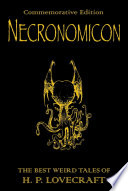I like JavaScript. JS. ECMAScript. Ol' Jay Scrizzle as nobody calls it.
I also like jQuery. jQ. jQuizzie. jamiroQuery. Whatever.
Ignoring the stoopid nicknames I just made up, did you notice how I referred to JavaScript and jQuery separately? I didn't say "I like JavaScript, there are some really great lightbox plugins for it" just the same as I didn't say "I wish there was a way to do indexOf in jQuery".
I'm regularly amazed at how many new (and some not-so-new) web developers either think they know JavaScript because they know jQuery or wish there was a way to do something in jQuery that they read about in an article about JavaScript. jQuery is a library written to make coding in JavaScript easier. It's made in JavaScript so you can say "jQuery is JavaScript" but only in the same way that "Simon is male". To confuse jQuery as all of JavaScript is the same as saying "Simon is all men" (don't worry, there's still only one of me).
For most web site or web app development, I do recommend using a library. Personally, I've used jQuery and Prototype extensively and decided I prefer jQuery. Libraries are designed to make coding faster and more intuitive and they can be a great productivity aid. You can get a lot more done quicker. There is a downside, however.
Downside
If you're doing what the library was intended to help with, great. Slide this panel up, pop open a modal window, scroll to the bottom of the page and highlight that header. Brilliant. The difficulties come when you're either trying to do something the library wasn't intended to do or something nobody's thought of before or you're just plain doing something wrong. If you are fluent in your library of choice but don't know the JavaScript underpinnings, your usual debugging tools can only help you so far. There will come a point where there's an impenetrable black-box where data goes in and something unexpected comes out. Okay, it's probably still data but it's unexpected data.
Don't let this point in the process be the discouragement. This is where the fun bit is.
Learning to read
Library authors are very clever groups of people. Often large groups. Reading through the unminified source of a library can be an awesomely educational experience as it's usually the culmination of many years best practice. If you want a nice introduction to some of the cool things in jQuery, for instance, check out these videos from Paul Irish:
- http://paulirish.com/2010/10-things-i-learned-from-the-jquery-source/
- http://paulirish.com/2011/11-more-things-i-learned-from-the-jquery-source/
I've dug around in jQuery many, many times to try and figure out why something does or doesn't do what it should or shouldn't. The most detailed investigation was probably Investigating IE's innerHTML during which nothing was solved but I found out some cool stuff.
Learning to write
The best way to get your head around libraries is to write your own. Yes, there are literally millions of them (not literally) out there already but you don't need to aim for world dominance, that's not the point of writing your own. Start simply, map the dollar symbol to document.getElementById. Done. You've written a tiny library.
function $(id){
return document.getElementById(id);
}Now you can add some more stuff. Maybe you could check to see if the thing passed to the $ is already an element or if it's a string. That way, you could be a bit more carefree about how you pass things around.
function $(id){
if(id.nodeType) {
return id;
} else {
return document.getElementById(id);
}
}Add in a couple of AJAX methods, some array manipulation and before you know it, you've got a full-blown web development toolkit.
Here's your Library Card
By now, you've rooted around in the jQuery undergrowth, dug through some of Moo's AJAX and pulled apart Prototype's string manipulation. You've written your own mini library, gotten a bit frustrated and wished you had a community of several thousand contributors to make it more robust. Now you're ready to start getting irked every time someone on Forrst asks if there's a jQuery plugin for charAt. Enjoy.


